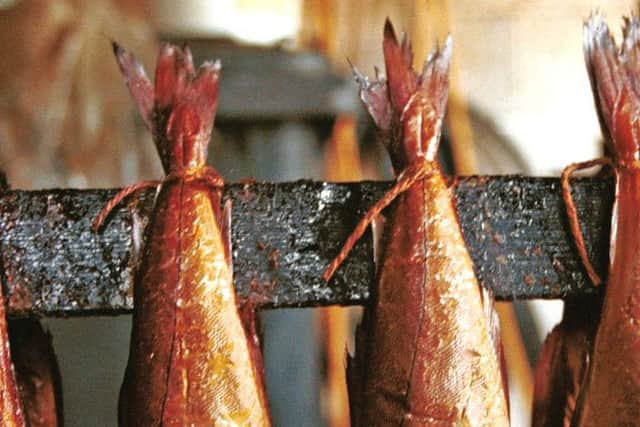Brexit set to impact trade mark and IP laws


Intellectual property (IP) encompasses everything from copyright to patents, trade marks and Protected Geographical Indications (PGIs), which, when talked about in relation to Scottish food and drink tends to conjure up images of Arbroath Smokies hanging over a barrel fire pit, or slices of Stornoway Black Pudding nestling next to the sausages in a fry up.
When it comes to food and drink, the IP that usually carries most value is the branding, which should be a top priority for businesses in the sector, whether they are starting up or innovating at a later stage.
Advertisement
Hide AdAdvertisement
Hide AdBranding covers a huge variety of features including the name of the company or product, the packaging, smell or colour scheme.


“Branding can be protected in a number of ways and one of the main ways is registered trade marks,” explains Gill Grassie, head of dispute resolution at Brodies.
“Trade marks can cover the presentation, the packaging, the shape of the product, and in that regard there have been a number of really interesting trade mark issues.”
Grassie highlights the KitKat case which hit the headlines earlier this year when Cadbury argued that Nestlé-owned KitKat should not be able to register the shape of the four-fingered chocolate bar.
On appeal, Cadbury came out on top, managing successfully to invalidate what was already a registered trade mark on the basis that the shape of the fingers was not something that customers relied on to inform them of the origin of the product, relying instead on the name and the packaging.


With trade marks of high importance to the £14 billion sector, it should come as little surprise that food and drink clients are turning to their solicitors for advice on how to weather the Brexit storm.
“Brexit will not affect UK trade marks; they will still exist,” explains Grassie. But that is where the certainty ends.
“The issue really comes in relation to EU trade marks (EUTMs) which have existed for some time and have been highly successful.
Advertisement
Hide AdAdvertisement
Hide Ad“Often, even if UK companies don’t yet make sales under the mark in the rest of the EU, they will still register an EUTM because it protects them for any future launch. As a pan-European right it is very effective.
“Clearly after Brexit the situation with EUTMs will differ in that these will no longer cover the UK. The issue is how that might affect businesses which operate in the UK under an EUTM.”
She continues: “There are many unknowns as with all areas of Brexit, but with EUTMs a lot of work is going on behind the scenes to ensure minimum disruption to business.”
When the UK exits the European Union, EUTMs which cover all 28 member states will no longer cover the UK.
The suggestion at this stage is that new legislation should convert the UK part of EUTMs into UK national registrations and backdate the protection.
“In terms of trade marks, businesses should continue as normal and act to protect the relevant key parts of their branding as appropriate,” advises Grassie.
“If they have existing EUTMs then ideally they need to ensure use of these in the UK and in at least one other EU member state to avoid non-use invalidity challenges.”
Statistics released by the UK Intellectual Property Office (IPO) show there has been a significant increase in UK national filing since the Brexit announcement, which Grassie says is “because companies are hedging their bets and seeking dual protection”.
Advertisement
Hide AdAdvertisement
Hide AdShe adds: “More generally with regard to agreements that relate to those trade marks these should be reviewed with Brexit in mind.
“In relation to any new agreements, at this point certainly they should be negotiated bearing in mind what might or might not happen.”
It’s worth noting there is also an international trade mark system which won’t change and can provide businesses with global coverage.
The impact of Brexit doesn’t stop with EUTMs and for food and drink businesses in particular, there are GIs – or geographical indications – to take into consideration.
Under EU law there are three schemes of geographical indications: Protected Designation of Origin (PDO), Protected Geographical Indication (PGI) and Traditional Specialities Guaranteed (TSG).
“GIs are really important to the food and drink industry in Scotland and differ to trade marks,” says Grassie.
“My research suggests that PGIs could represent £16bn worth of EU food and drink sales.
“A key value of GIs is that they can help achieve a premium price for a product.”
Advertisement
Hide AdAdvertisement
Hide AdThe one that springs to mind is Scottish salmon, which with its coveted Label Rouge status was the first non-French product to be awarded the quality mark back in 1992. It has held PGI since 2004.
Label Rouge recognition requires a list of tight requirements which manifest themselves through an official sign of quality.
The result is that the product becomes especially sought after, it is deemed “premium” and ultimately has the potential to command a higher price.
While not owned by one specific company, GIs highlight regional and traditional food and drink where the authenticity and origin can be guaranteed.
“Consumers are sophisticated and are thinking more about where their product comes from and about the quality,” says Grassie.
“GIs are all about that. They are seen as extremely important and increasingly so, particularly for the Scottish food and drink industry because Scotland has really upped its game in relation to its food and drink offering overall.
“We have seen a real renaissance in craft distilling, for example, and you can see that there could be scope there to have a GI.
“Two-thirds of UK gin is now being produced in Scotland and 22 new gin distilleries and 22 new breweries opened in 2016.”
Advertisement
Hide AdAdvertisement
Hide AdWhen it comes to Brexit, the consequences for GIs are slightly different to trade marks.
At present GIs are protected by an EU regulation, which takes effect in the UK without further national legislation.
Grassie explains: “We don’t have a UK national GI system and that potentially could mean that after Brexit those Scottish GIs could be without GI protection in so far as the UK is concerned.
“In that respect, what commentators are suggesting is to have continued protection in the UK after Brexit by creating a new national UK GI register before or at the point of Brexit.”
That register would be populated with existing EU and UK GIs to ensure those currently protected under EU law will continue to have protection under UK law.
“The practical advice for food and drink businesses is to be aware of these potential changes, monitor the position and consider engaging with Government agencies to secure the best result,” advises Grassie.
“We are getting numerous inquiries about IP and Brexit and have built up huge Brexit expertise in all sectors and in specialised areas of law.
“Clients need to know the practicalities and what they should be doing to pre-empt possible changes.
Advertisement
Hide AdAdvertisement
Hide Ad“Despite the uncertainty there are steps that they can take now to mitigate risk.”
Terms of inclusion
– Geographical Indication (GI) is a sign used on products with a specific geographical origin, which possess qualities or a reputation that are a result of that origin.
– Protected Geographical Indication (PGI) covers products whose production, processing or preparation takes place in a specific area. Well-known Scottish examples include Scotch Whisky, Scottish Salmon, Scotch Beef, Arbroath Smokies and Stornoway Black Pudding.
– Protected Designation of Origin (PDO) covers products which are produced, processed and prepared in a specific area, according to a particular, often traditional, method.
– Traditional Speciality Guaranteed (TSG) covers products which have a “traditional character” or “customary names” which distinguish them from similar products. These products do not need to be connected to a specific geographical area or method of production. The criteria for TSG is that a product must be able to demonstrate that the materials and methods used in its production have remained consistent for a minimum of 30 years.